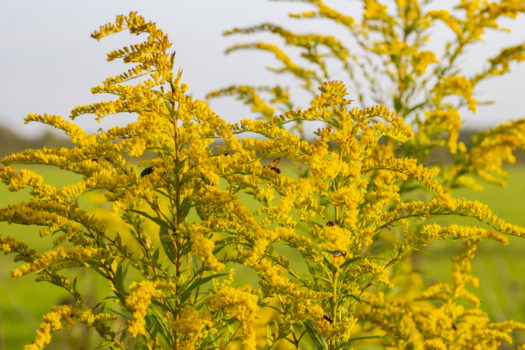All products are selected by our Sharp Survivalist editors. If you buy something through our links as an Amazon Associate we earn from qualifying purchases.
In the heart of nature, enveloped in the wild embrace of the wilderness, we often find ourselves at the mercy of the elements. The unpredictability of these terrains, however, does not necessarily equate to hopelessness. Contrarily, we can uncover a lifeline in the most unassuming source: edible plants. This article intends to delve into the art of wilderness survival using edible plants, underlining the importance of recognizing the friend in the foliage.
Do you ever wonder how our ancestors managed to survive in the wild, with no modern conveniences at their disposal? They were well versed in utilizing edible plants for a myriad of survival needs. From food sources to medicine, from tools to shelter, the natural world offered them everything they needed. Picture a primitive man, lost and forlorn, coming across a sea of green. The edible plants, at first glance, might appear indistinguishable, but as we unravel their mysteries, we realize each holds a secret survival weapon.
Consider the common cattail, colloquially known as the “supermarket of the swamp.” This plant is a veritable treasure trove of nutrients. The young shoots can be eaten raw or cooked, the yellow pollen is an excellent flour substitute, and the roots can be transformed into a high-starch food source. Suddenly, that humble swamp is no longer a deterrent, but a tantalizing buffet table.
Wouldn’t it be amazing if a plant could help you start a fire? You may not believe it, but the answer lies in the humble bowdrill, a simple yet effective tool made from a variety of wood types. The hand drill, spindle, and fireboard create friction and subsequently, fire. Remember, when dealing with wilderness survival, knowledge of fire-starting techniques is as crucial as the spark itself.
One may argue, “What about first aid?” Well, even in this regard, nature doesn’t disappoint when it comes to medicinal plants. The jewelweed, a plant easily recognized by its yellow or orange flowers, is a natural remedy for poison ivy rashes. Similarly, yarrow, with its distinctive feathery leaves, is an effective coagulant and can be applied to wounds to stop bleeding. These plants demonstrate the invaluable importance of familiarizing oneself with local flora before embarking on any wilderness adventure.
Let’s not forget about how to build a shelter. Think about the pliability of willow branches for building a basic framework or the waterproof qualities of large leaves like banana or palm. Isn’t it intriguing how these seemingly mundane plants suddenly come to life when we perceive their survival benefits?
By taking the time to learn about wilderness survival with edible plants, we equip ourselves with the tools necessary to face nature’s challenges. Survival isn’t just about enduring; it’s about thriving and making the most of our surroundings. Whether it’s utilizing the diverse culinary options presented by edible plants or leveraging their medicinal properties of medicinal plants for first aid, understanding how to harness these natural resources is both a skill and an art form.
Just imagine the wilderness as an open book, where each leaf is a page filled with survival secrets. Isn’t that a compelling metaphor? We must remember that survival isn’t just about our will to live. It’s about the skills we acquire, the knowledge we cultivate, and the respect we harbor for the wilderness and its abundant plant life.
Understanding plants and their multifaceted uses, therefore, isn’t simply an interesting piece of trivia; it could be the difference between life and death in a survival situation. By recognizing the latent potential in these green companions, we can foster a symbiotic relationship with nature, turning a potentially daunting experience into a manageable, even enjoyable, wilderness adventure.
So, the next time you find yourself wandering through the wilderness, remember, you’re not alone. You’re surrounded by a verdant community of potential allies, each one holding the key to survival. And who knows? Maybe these green friends will not only teach you about survival, but also provide a profound lesson about the interconnectedness of life on Earth.


